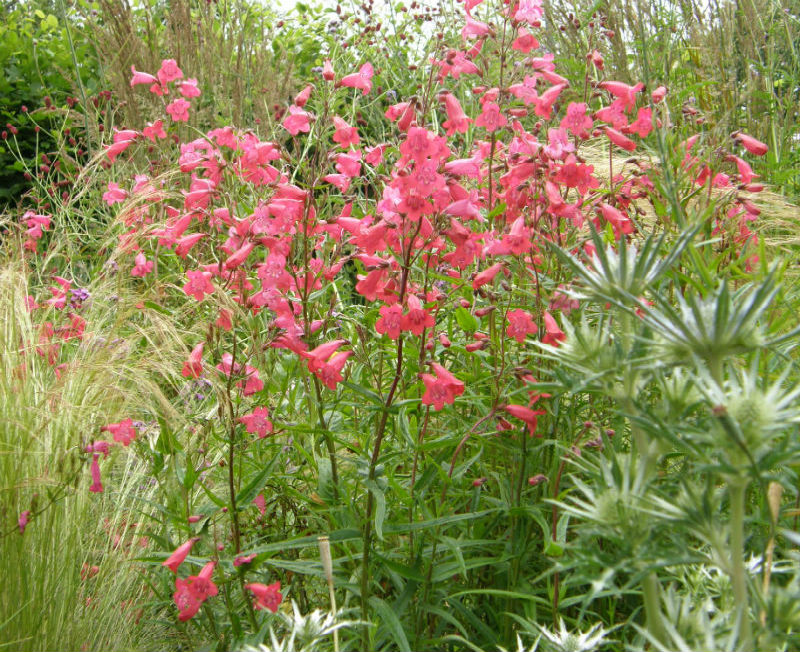
It’s been a funny old year so far weatherwise. Most of the plants that were hit by that hard frost in late April have come through, albeit with less vigour having had to put out new growth a second time.
The hostas don’t have quite the same stature as normal, some still show the damage in limp and twisted leaves. I lost a lot of flower buds as well which may have been due to the lack of water this spring. One week buds on I sibirica’s and I germanica’s coming on fine, then on some plants in a few days they were just dried husks.
I’m late getting in bedding and changing out spring pots this year, and where I have added bedding and water, the moles follow. I can understand that with the dry ground worms are finding it hard which makes the moles more desperate, and if we have breeding females all the more desperate and destructive. Plants wilt and can’t put out roots to more firmly anchor them in the soil and draw up what moisture there is if moles continue to create air spaces by running rings around them.
Plus we’ve had some really battering winds toppling plants and swirling and flattening clumps of others.
My (over optimistic anyway) raised woodland border. ‘The Himalayas’, which faces south but is behind one of our workshops, so sort of shaded, took a hammering from the 31C temperatures this week.
Roses at least came out (rather than balling as they do in wet weather) but too quickly. Deep red Souvenir du Docteur Jamain scorched even in a north-facing border. Note to self Blanchefleur’s flowers all go crispy brown – not a pretty sight.
Thieves
This year too we seem to have more thieving birds again. Last year the currants despite being uncovered were left alone – this year they have all been taken not yet ripe. I covered the strawberries to keep out the birds but presumably rodents have taken them – not one left for us. And yesterday a blackbird started taking half-ripe blackberries from Waldo, it too will soon be stripped.
So what’s good?

The scent of our much maligned Lonicera japonica Halliana fills the garden especially towards the evening.
Rosa mutabilis lost its first flush of flowers (as did climbing deep red rose Guinée earlier on) frost/dry?, now she’s in full pink and pale orange bloom.
The grass bed is coming into its own and the grasses starting to flower, Penstemon Firebird is again really good value, it withstood the winter with its roots in pretty much pure clay, I have less luck with Andenken en Friedrich Hahn (Garnet).

Papaver spicatum with its furry leaves and buds and soft orange petals is holding its own this year against a clump of Pennisetum Fairy Tales which was frosted so is not so far on as last year. I’ve been enjoying the more subtle yellow with a hint of burnt orange colouring of our native Glaucium flavum this year which are just finishing, the long horned seedpods which give it its name of Horned Poppy are taking over.
The majority of last year’s dahlias overwintered in the ground so have a bit of a head-start. Luckily most emerging growth missed the frost unlike the fuchsias overwintered in the ground which are struggling.
The first in flower is single dark red, dark leaved dwarf dahlia – Sarah (National Dahlia Collection). Although as the flower ages it goes biscuity not retaining the depth of red.

I’ve never grown Galtonia viridiflora before – an interesting curiosity and earlier than the white G candicans.
The smell of rain-wet earth
I thought I could smell rain – I’ve just looked up and a light misting is moving across the field. According to a piece on the Metoffice website what we smell when it rains after a period of dry weather is called petrichor, a combination of plant oils secreted in the soil and soil bacteria which are released when water drops hit the ground.
